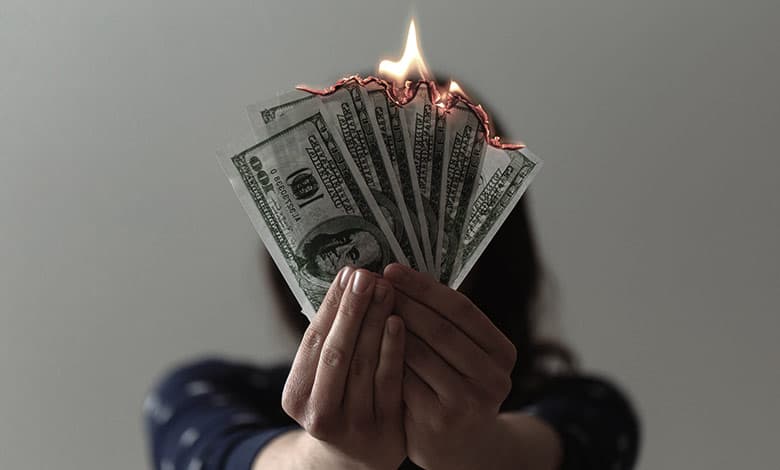
Defacing or destroying your money is illegal, and you’ll be punished for that. The punishment and fine vary from country to country. Some countries take this case easily, and some consider it a major crime. So be careful, and know about the laws.
In the United States, for example, this is governed by Title 18, Section 333 of the United States Code, which states that anyone who mutilates, cuts, defaces, disfigures, or perforates, or unites or cement together any bank bill, draft, note, or other evidence of debt issued by any national banking association, or Federal Reserve bank, or the Federal Reserve System, with intent to render such bank bill, draft, note, or other evidence of debt unfit to be reissued, shall be fined under this title or imprisoned not more than six months, or both.
In the European Union, which uses the euro as a common currency, the European Central Bank (ECB) and national central banks of the Eurosystem define the legal framework for handling the mutilation or defacement of currency. According to the ECB’s guidelines, it is prohibited to intentionally mutilate euro banknotes or coins (e.g., by writing or drawing on them or applying stickers to them) or to destroy euro banknotes or coins intentionally.
I will discuss the law and punishment for money defacing like burning, writing, cutting, drawing, or destroying. Let’s learn.
Is it illegal to write on money?
There are two separate statutes, one dealing with paper money bills and the other with coinage. So let’s address the paper money 1/1. The statute says that,
It is a misdemeanor for anyone to quote, mutilate, cut, deface, disfigure or perforate or unite or cement together or do any other thing with intent to render the money unfit for re-issuance.
The big question is that last phrase that says with intent to render the money unfit for re-issuance. It’s unclear whether it only applies to doing any other thing or to all the disallowed things, such as mutilation, cutting, and defacement. That’s a significant difference because, in the first interpretation,
All mutilation, disfigurement, cutting of paper money is a misdemeanor and can be punishable with a fine and or imprisonment of up to 6 months.
But if the intent to render it has to be applied to each of them, you can mutilate, cut, and disfigure all you want as long as you’re not doing it with the intent to render the money unfit for re-issuance.
Also, there is unsurprisingly not very much case law interpreting the statute. Not many people are prosecuted for defacing money, which is telling in and of itself. Let’s look at the coinage law. That law is a little bit stricter. It says,
Anyone with fraudulent intent alters to face mutilates, and pairs diminish falsifies scales or lighten a US currency coin is guilty of a felony and can be in prison for up to 5 years.
Is burning money illegal?
Burning money is illegal, and you can get a ten-year prison sentence. The actual regulations state that you can’t cut the money, punch holes in it, or change the denomination. If you burn money, you alter the appearance and change the denomination.
According to the Department of the Treasury’s Official Regulations:
Whoever mutilates, cuts, disfigures, perforates, unites or cements together, or does any other thing to any bank bill to render such items unfit to be reissued, shall be fined under this title or imprisoned not more than six months, or both.
I’m discouraging you from defacing money because that’s against the law.
Learn more:
Why Is It Illegal To Buy A Car From The Manufacturer?
Why Is It Illegal To Travel With Cash?
References:
Columbia Journalism Review: CNBC’s Kudlow: On-Air Lawbreaker?
United States Senate Committee on the Judiciary (1989). The Flag Protection Act of 1989: report together with additional and minority views (to accompany S. 1338). Senate Report. Vol. 101–152. Washington, D.C.: U.S. G.P.O. Reprinted in Curtis, Michael Kent (1993). The Constitution and the Flag: The flag-burning cases. Vol. 2. p. 434.
Acosta, Rocky. “Currency as Art 2.0 – Defacing Bills”.
Ruling (EU) n. 1210/2010 of the European Parliament and Council.

